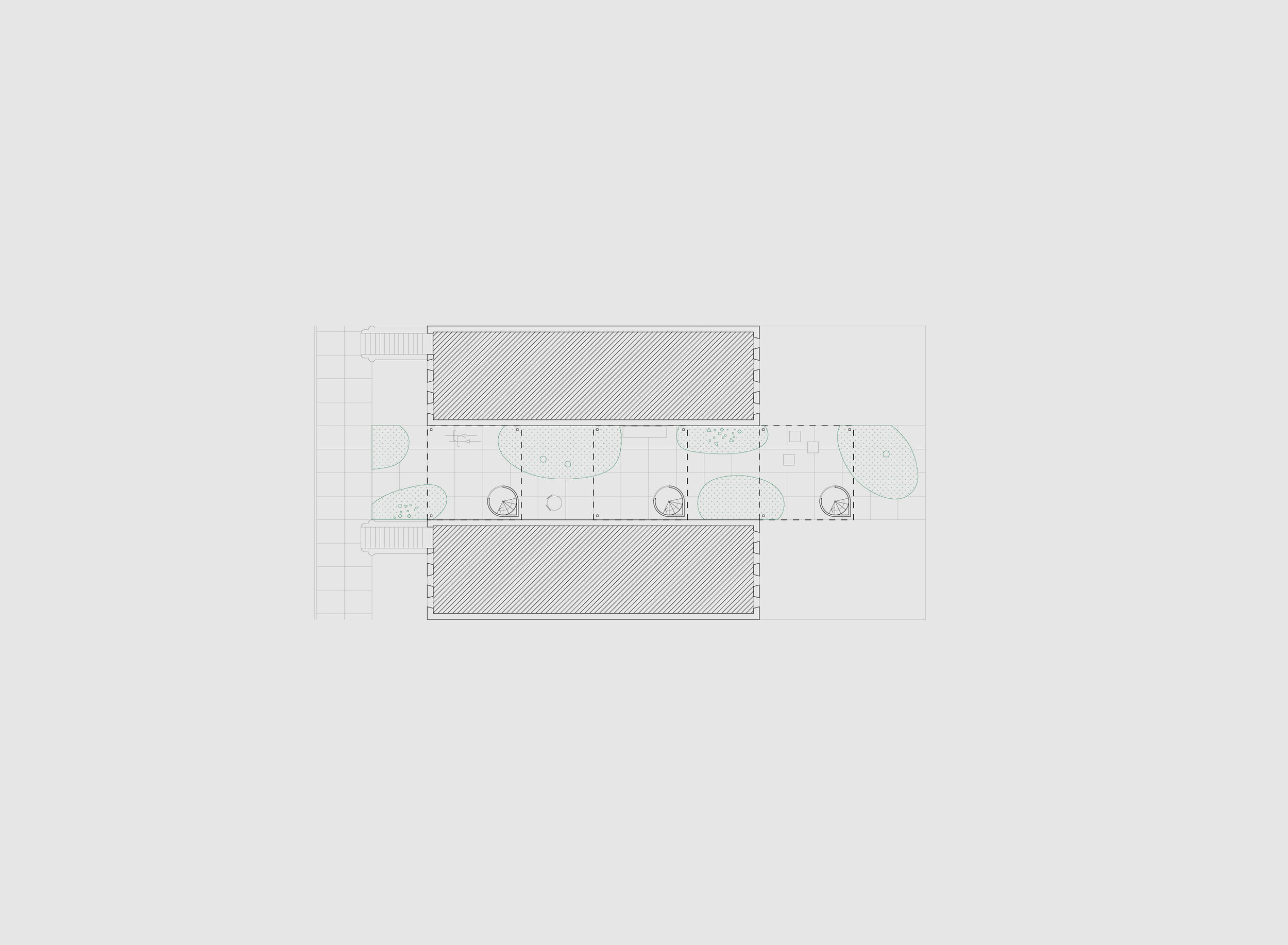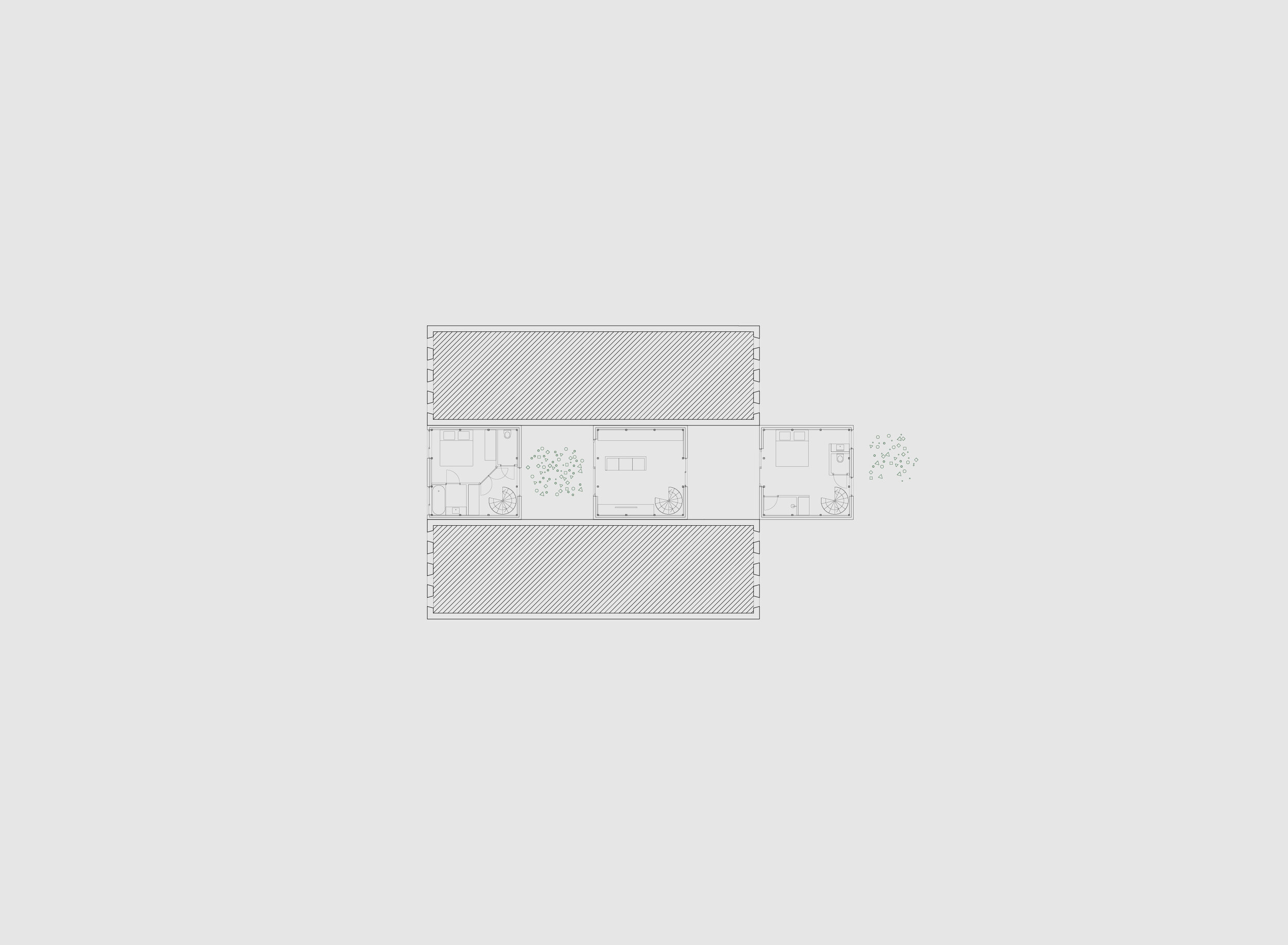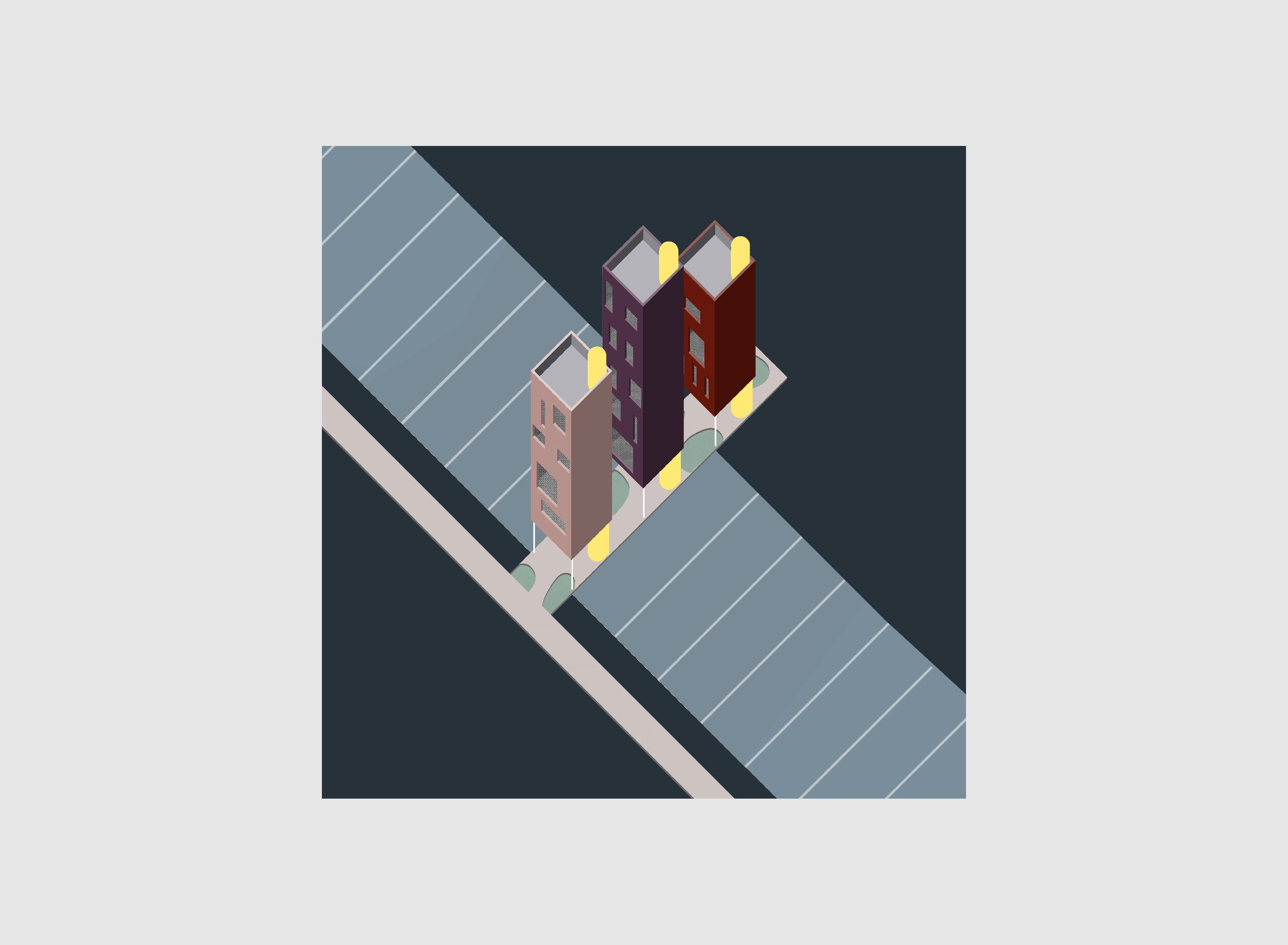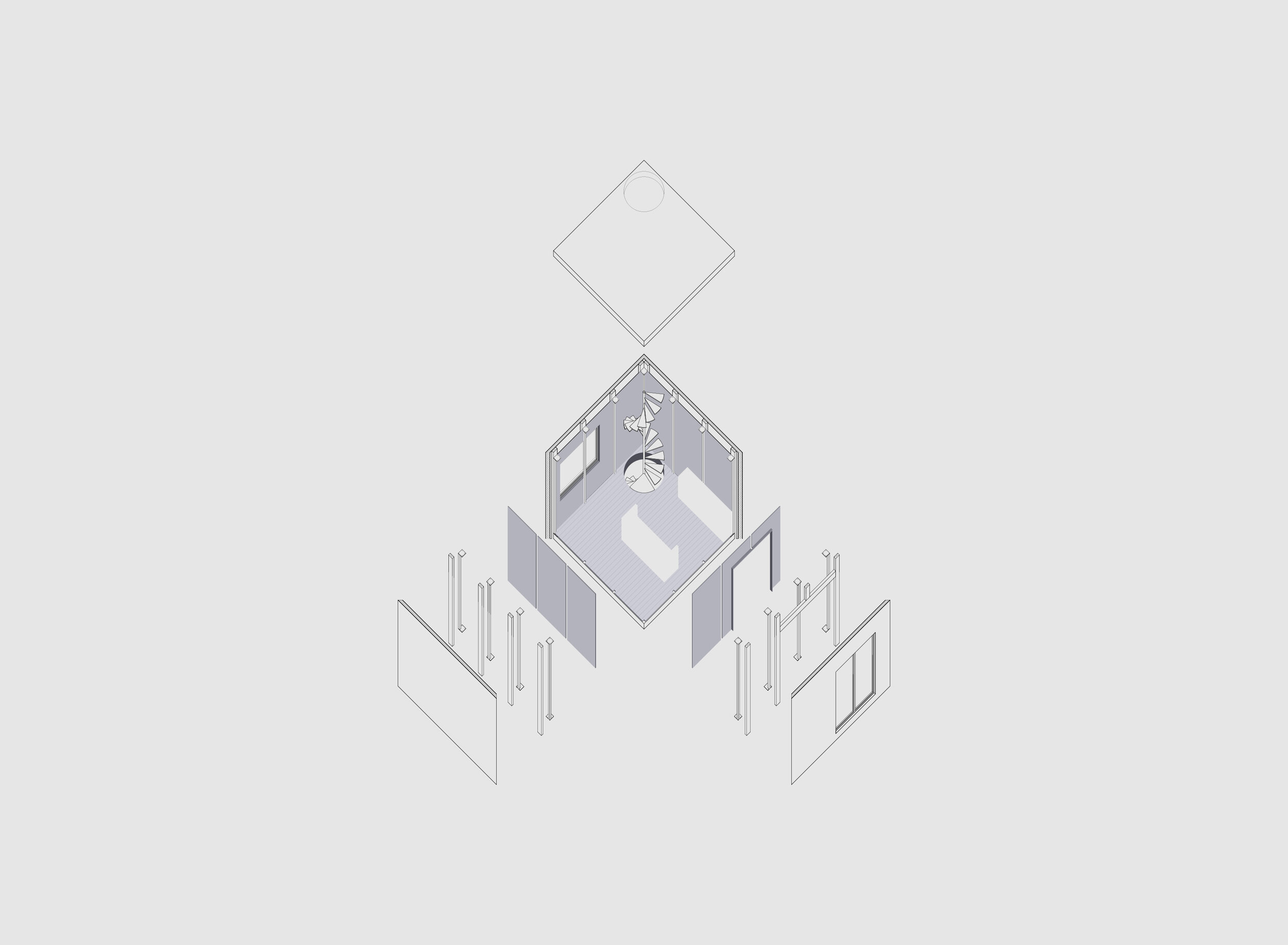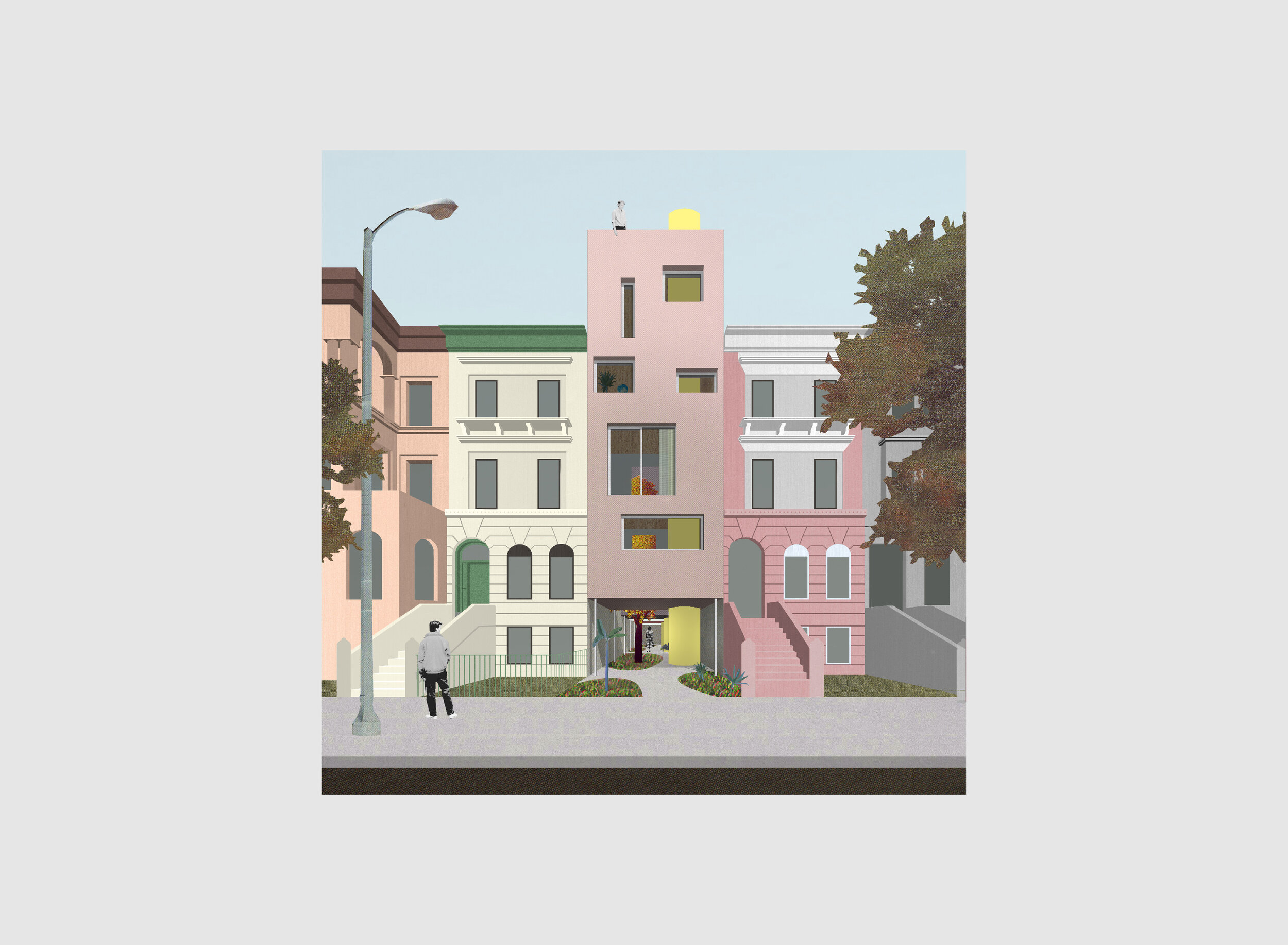GEN 26 - At Stakes
New York City (US)
Affordable Housing
2019, competition
In our contemporary society, increasingly, the marginalised feel they do not have a stake in society. When we once talked about the “marginalised” as a fringe group within society, the condition of feeling powerless is fast being normalised. One of the most explicit problem is the rising cost of living in a big city like New York, with issues on rental and housing prices way beyond the reach of new entrants to the housing market and to impoverished groups. While these issues are widely discussed, one of the more critical but less talked-about implication of housing is the subjectivity of the inhabitants; the occupants’ relation to their space of living.
The element that divide different social units, evolved from the party walls separating the adjacent buildings to the walls of subdivision within the house itself. The romanticised notion of neighbourly spirit might be true in yesteryears, however, the reality of our contemporary times, is that it has resulted in a social dynamic that is awkward at best. Tenants in the building, retreating to their apartments after a day of work and other activities. These walls, become the very element of individualisation.
The proposal adopts the typology of a plinth and towers typology. However, in this case, the plinth is converted as an open ground space without programs. The street of the city is the space of the collective, the public realm. By opening up the ground floor of the proposal, the publicness of the streets is brought into the plot. Dissolving the distinct street facade typical to row houses, it introduces porosity into the ground plane of the building, enabling interactions with the streetscape. This common ground also acts as circulation to the different individual towers within the plot. Communal activities between the different residents of the units can occur on this common ground.
On top of this open plinth, a series of towers are placed along the length of the plot. Each apartment is consolidated as a single architectural unit(the tower), as opposed to the subdivision of a larger unit as is happening for row houses now.



